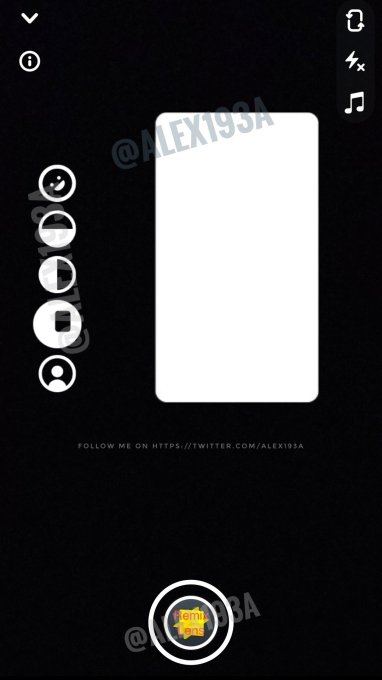Ariane de Bonvoisin
Contributor
Ariane de Bonvoisin is an executive coach to top CEOs, startup founders and VCs. She has keynoted the Oprah conference, given a TED talk, and been invited to Google, Amazon, the World Bank, Union Square Ventures and Red Bull to teach about navigating change and founder and startup wellness.
The business world has a love-hate relationship with coaching. Founders are visionaries: They start with an idea, a talent, a dream, but not necessarily the business know-how. Because being an entrepreneur doesn’t require a license or training — Jeff Bezos is an engineer and computer scientist; Elon Musk is an economist and physicist, and so on.
In any other industry, when someone with raw talent — an athlete, a singer, an actor — furthers their career, the first thing they receive is a coach. And it doesn’t stop once they get their first Olympic gold or Grammy.
Coaches don’t leave their side until they hang up their gloves. Tiger Woods is famous for having worked with many coaches to switch up his tactics and keep exceeding in his performance.
In any other industry, when someone with raw talent — an athlete, a singer, an actor — furthers their career, the first thing they receive is a coach.
Despite a culture that pushes founders to the edge of their physical, mental and personal limits as they build their company, we insist that they fly solo. They’re led to believe that reaching out for support is a sign of weakness.
That stigma is a huge part of the problem. We look up to business magnates, believing that they sailed from a college dorm to the C-suite without breaking a sweat. But we don’t see the vigorous kicking that goes on beneath the surface. As a client of mine once mused, even the best leaders are self-sabotaging themselves at least 30% of the time. I know for a fact that top Silicon Valley billionaires have nutrition, parenting, meditation and life coaches, but they — like half of my own clients — are reluctant to embrace this out in the open.
VCs know that they don’t invest in the business; they invest in the person. Record amounts of money are being funneled into mental wellness startups right now, but investors also need to direct that awareness toward their founders’ well-being. By offering access to a coach to all your portfolio founders, you’ll be tackling the real problems stopping them from pouring their energy into their business, and you’ll without a doubt improve your returns.
1. Business is not always a founder’s main problem
I coach founders and CEOs of startups, and more than half their main life challenges are not work related. They’re getting pulled in multiple directions — some have cancer, others are having an affair, a few are going through IVF, others still are dealing with past grief and traumas.
And when a problem is work related, it’s often a communication or psychological issue: How do I face my fear of failure? How do I lead a team of 50 for the first time? Should I trust my gut?
All this is happening in the midst of Series A raises, hiring and firing employees, acquisitions, and deciding whether to bridge or shut down the business. Imagine how much emotional energy and hours it takes for founders — or anyone, really — to face those intimate issues in isolation while putting on a brave face with investors or at board meetings.
One of the most recurring concerns founders share with me is that they feel alone.
VCs, when you choose to fund someone, you’re also marrying into their past, their family, their personal issues. The full package. Ask yourself — do you currently know the major distractions in the lives of all your portfolio founders? If you don’t, start with the assumption that something is going on in their life other than work and make coaching available to them at any time.
If you commit to helping founders manage their fears, limiting beliefs and blind spots, you’re committing to their potential as a company and industry leader. A healthy leadership is a healthy company.
2. Return on coaching (ROC)
As with elite soccer coaches, the benefits of business coaching are highly visible, without the million-dollar expense. Founders start to make better decisions the first time around. They hire the right talent, rather than hiring, onboarding and firing someone within a month.
They have more honest conversations with stakeholders, avoiding conflict and allowing more people to contribute meaningfully to the business’ growth. They have the proper mindset to fundraise, and their attitude matches the money they’re asking for.
That’s before getting to the physical improvements. My founders have lost weight, stopped smoking and drinking, and have more energy to build a business. If a founder works with chronic fatigue, which many are, it won’t be long before their body cracks. I get calls from clients caught in panic attacks before big meetings, struggling to steady their frayed nerves.
You can fund your founders’ well-being in a variety of ways. In the same way your firm might offer marketing or PR services to portfolio companies, coaching should be part of the package. Firms can make executive coaches available on retainer. You may choose to have a full-time resident coach, available whenever someone needs them.
At the very least, firms should make available a list of recommended coaches. Some coaches specialize in leadership coaching, female founders or health specifically, while others cover various personal and professional skills.
Investors will sometimes offer a handful of free sessions to their founders, but if they want to continue, they are then forced to decide between their personal health and the health of the business — which other people (including your firm) have staked millions of dollars on. It should never be a case of one or the other.
My hope is that in the future, VCs will set aside a percentage of their funds exclusively for mental wellness for founders and executives.
A few VCs have already taken a 1% pledge, but it’s the Europeans who are leading the charge here, with funds from Estonia to Ireland generously covering all founder coaching fees and other support programs. Those I know talk about how 10x growth is possible without burnout.
3. Cut through the stigma to enable founders to make the most of coaching
Founders are resistant to hiring a coach themselves because they’re worried about what their investors and board will think of them. They tell themselves: “If I were normal, and good enough, I wouldn’t need one.”
It’s not just their inner voice talking. When a client of mine joined a Silicon Valley startup, he asked his superiors if coaching could be part of his comp package. They wondered why he needed a coach.
In other industries, connecting someone with a coach is proof of their worth. That’s the conversation investors should be having: You’re good enough for us to give you money, so we’re going to give you someone to accompany you on your journey, so you don’t pretend you can figure it out at every step.
There’s also a negative connotation around the term “mental health” that we should be reframing. Those two words tend to make people think about depression, suicidal thoughts or addiction. Which is mental unhealth. Let’s talk more about mental wellness and founder well-being, which focuses us on the goal we’re working toward.
Eliminating the stigma can start with open conversations about well-being between investors and executives, as well as inviting a coach to talk to your founders about what these sessions entail, and why everyone has something to gain. By shattering the taboo, you’ll enable founders to make the absolute most of that experience, rather than hold back to keep up appearances.
If we start making coaching mainstream today, we might eventually see it as obligatory for all founders.
4. Lead by example
Finally, business leaders and investors need to set an example for the startup community, and especially people at the start of their journeys, that it’s OK to ask for assistance in bettering yourself.
Many VCs, like top CEOs, have coaches. If more simply owned it, they’d have so much power to normalize coaching, and even make #IHaveACoach fashionable. After all, we’re talking about the same industry that made meditation rooms trendy and kombucha an office feature.
Why not make coaching a central topic in future investor conferences, or, as a VC firm, publish a study on how portfolio founders who followed a coaching program saw greater business success?
For example: For years, Union Square Ventures has invested in providing value to their founders and has built a team whose responsibilities include developing leadership training, fostering mentorship circles and connecting founders to coaches. If you let founders see your commitment to human issues, it won’t occur to them that being human is being weak.
These approaches are also important self-promotion for VCs positioning themselves as the next generation of ethical investors. With so many alternative funding options becoming available, founders are seeking VCs who give them more than just capital and who see wellness and diversity and inclusion as inextricable from success.
Founder health and startup health can’t be separated from each other. On some level, all investors know this. So let’s give the people shaping tomorrow’s world the tools to be more comfortable in their own skin and more masterful in leading teams to achieve greatness and incredible returns.




